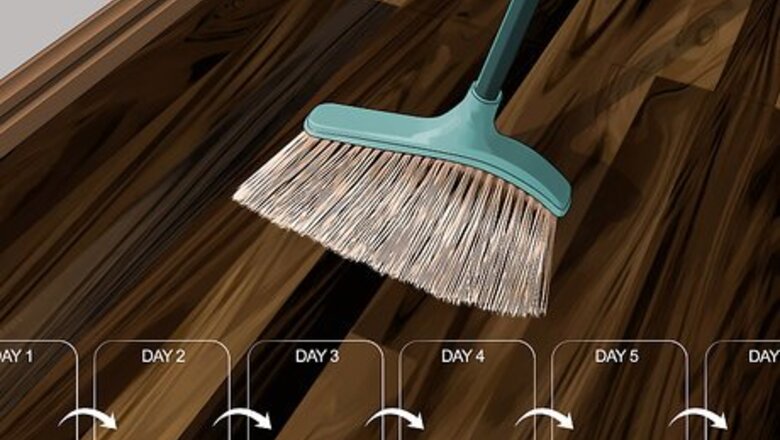
views
Cleaning with Vinegar

Sweep up debris daily. Routinely sweeping the hardwood removes dirt and protects the seal on the wood while mopping. It should also be done before you mop.
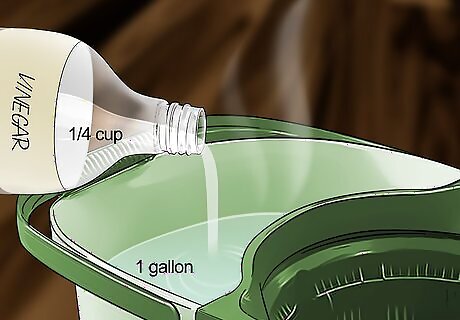
Mix vinegar and hot water. Add 1/4 cup (60 mL) of white vinegar to a gallon (3.8 L) of warm water. Stir thoroughly to get a natural cleaner effective on grime. Vinegar is an acid, so too much of it can wear away the seal on the wood. You may also put in a few drops of an essential oil, such as lemon or lavender, for a pleasing smell.

Dampen a mop in the mixture. Place the mop in the solution, then wring it out before use. This is necessary to do to avoid leaving lots of water on the floor. Cotton mops can make wringing difficult, so consider using a microfiber or spray mop. To clean small areas, use a cloth or sponge.
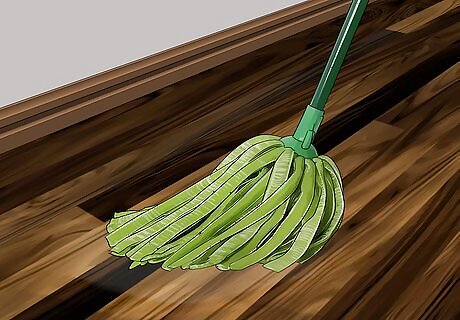
Mop the floor. Go over the entire floor with the damp mop. The first pass will loosen up any debris. You may have to go over a second time to remove all of the dirt. When the mop starts leaving streaks, be sure to rinse it off in the sink with hot water. Change out the cleaning solution once it appears dirty.
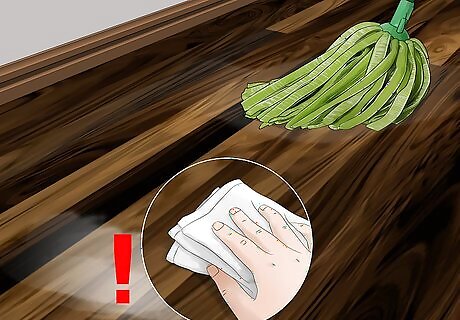
Check the floor for water as you go. When using a mop, you may see water pooling on the floor. Don’t leave this to sit. Use a clean, absorbent towel to quickly pick up excess water. Be sure to wring out your mop to avoid causing damage to the wood.
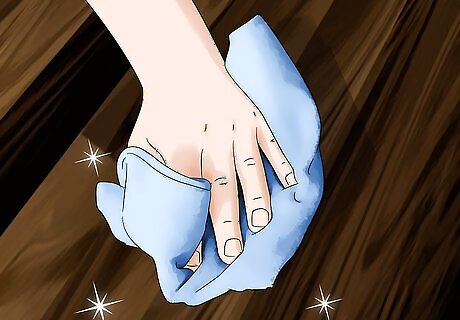
Buff the floor with a microfiber cloth. Optionally, you can wipe the floor with a clean, non-abrasive towel. One way to do this is to attach it to the mop with a clamp, but you can also do this by hand. Work in the direction of the grain. Not only will this shine your floor, but it will ensure that you haven’t left any water standing on the floor.
Making a Lemon Juice and Oil Polish
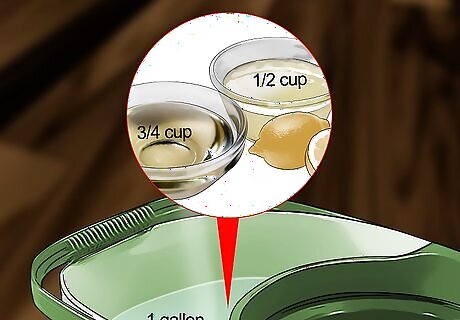
Mix water, olive oil, and lemon juice. In a mop bucket, combine ¾ cup olive oil (180 mL) with ½ cup (120 mL) lemon juice into a gallon (3.8 L) of hot water. The lemon removes grime, but the oil shines the floor.

Dampen your mop in the solution. Remember to wring out the mop thoroughly so it doesn’t leave puddles of water on the floor. It should not be dripping. Use a cloth mop or spray bottle instead of a cotton mop in order to better control the amount of water you use.
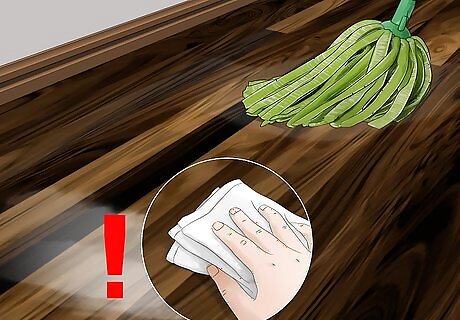
Check for water pooling on the floor. Again, as you mop, look for any water you’ve left behind. Pick up excess water with a clean towel. This prevents the water from soaking in and damaging the wood.
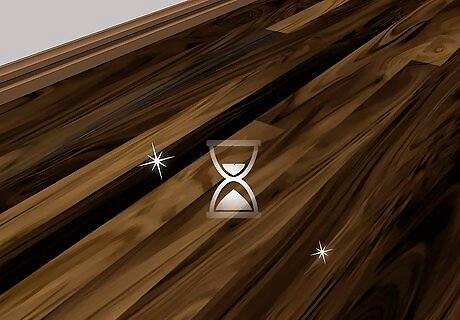
Let the solution dry. Stay off the floor for a few hours and the solution will dry on its own. There’s no need to rinse the floor with water. The oil will make the floor shine.
Removing Stains
Mix baking soda and white vinegar. Combine the two ingredients in equal amounts. Mix them and they will form a paste. This paste may also help remove dark spots, including pet stains, without scrubbing. Other options are to sprinkle on the baking soda and mop the next day or combine equal amounts of baking soda and water into a paste.
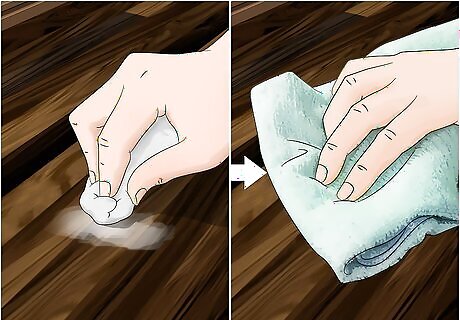
Apply the paste to the stain. Place the paste on the stain using a non-abrasive sponge, brush, or cloth. Allow the paste to sit until it dries. Afterwards, wipe it up and see if the stain is gone.
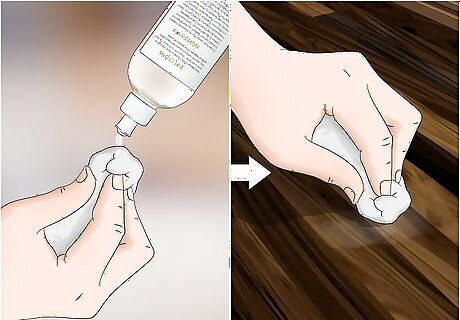
Rub oil-based stains with dish detergent. Place some of your castile soap or plant-based dish detergent on a microfiber cloth. Use it to break down the grease.
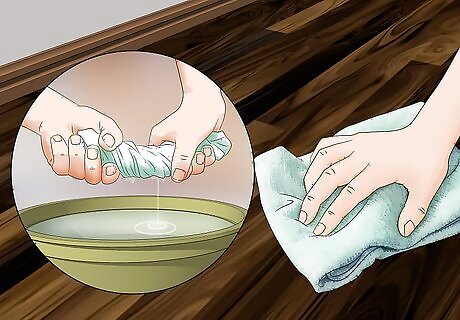
Rinse the spot with water. Dampen a clean microfiber cloth. Wring it out first so it is not dripping. Remove all of the soap. If the spot is not gone, you can try repeating the steps, cleaning with more detergent. When you’re finished, you can sand down the grain to make it look as good as new.




















Comments
0 comment